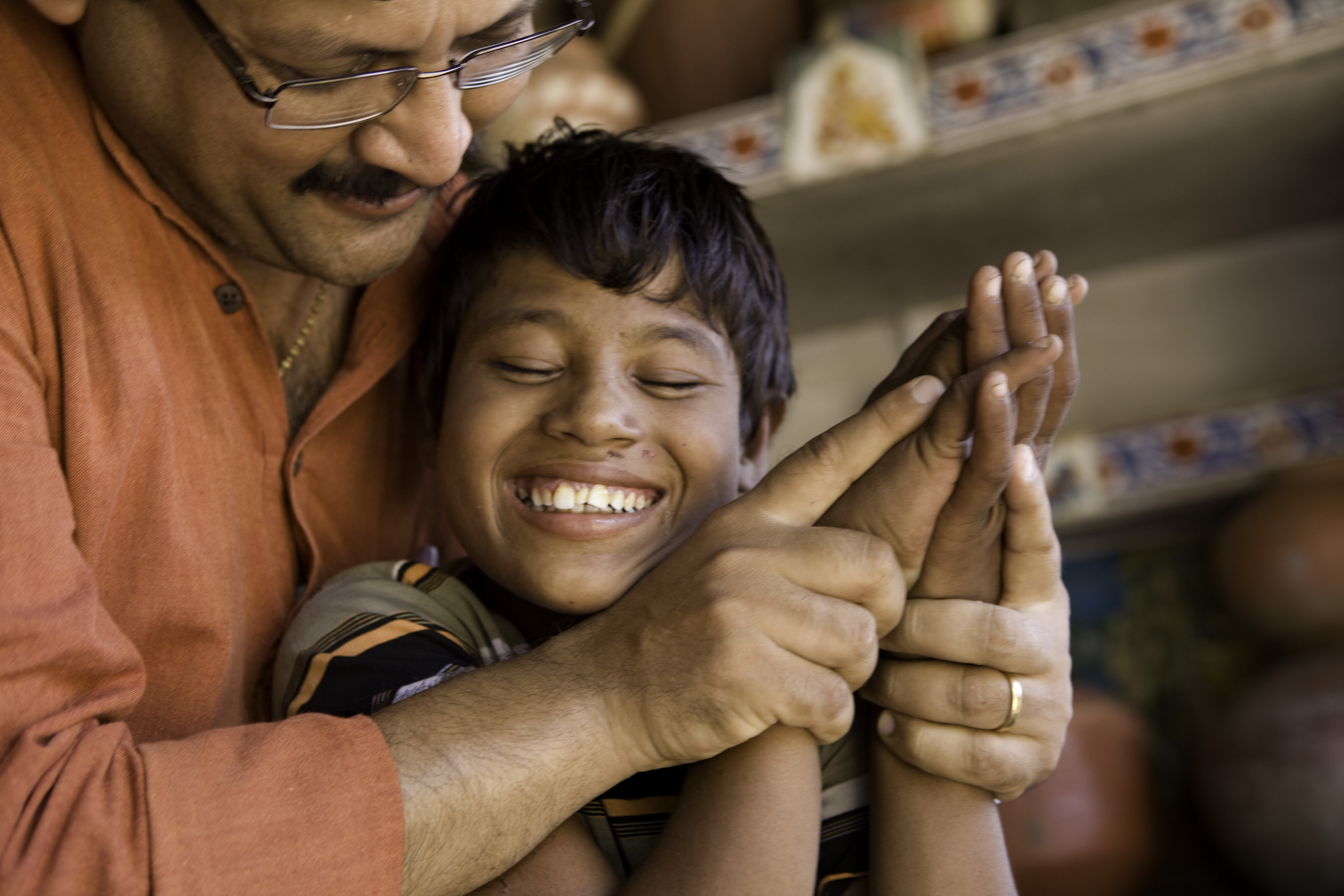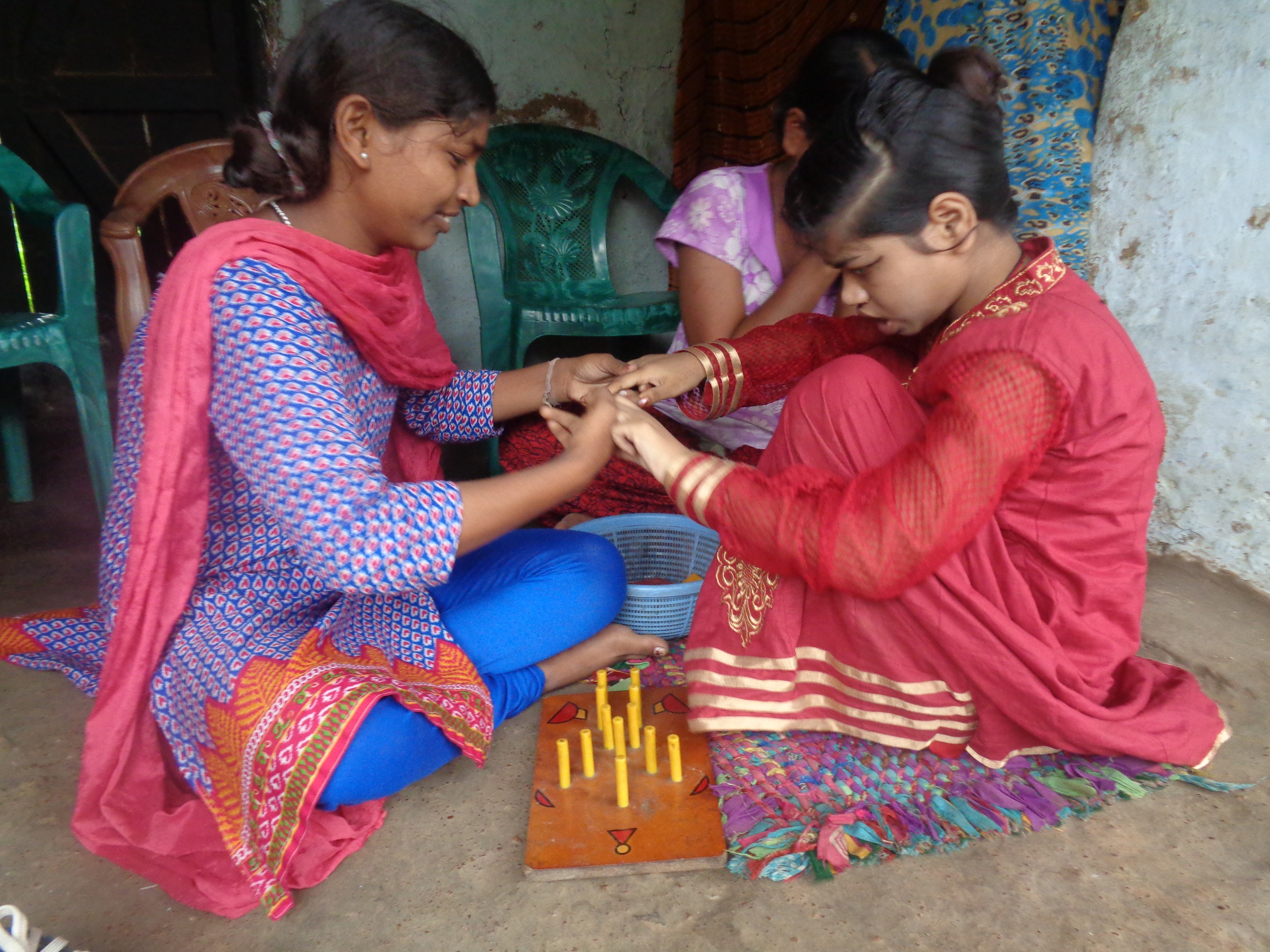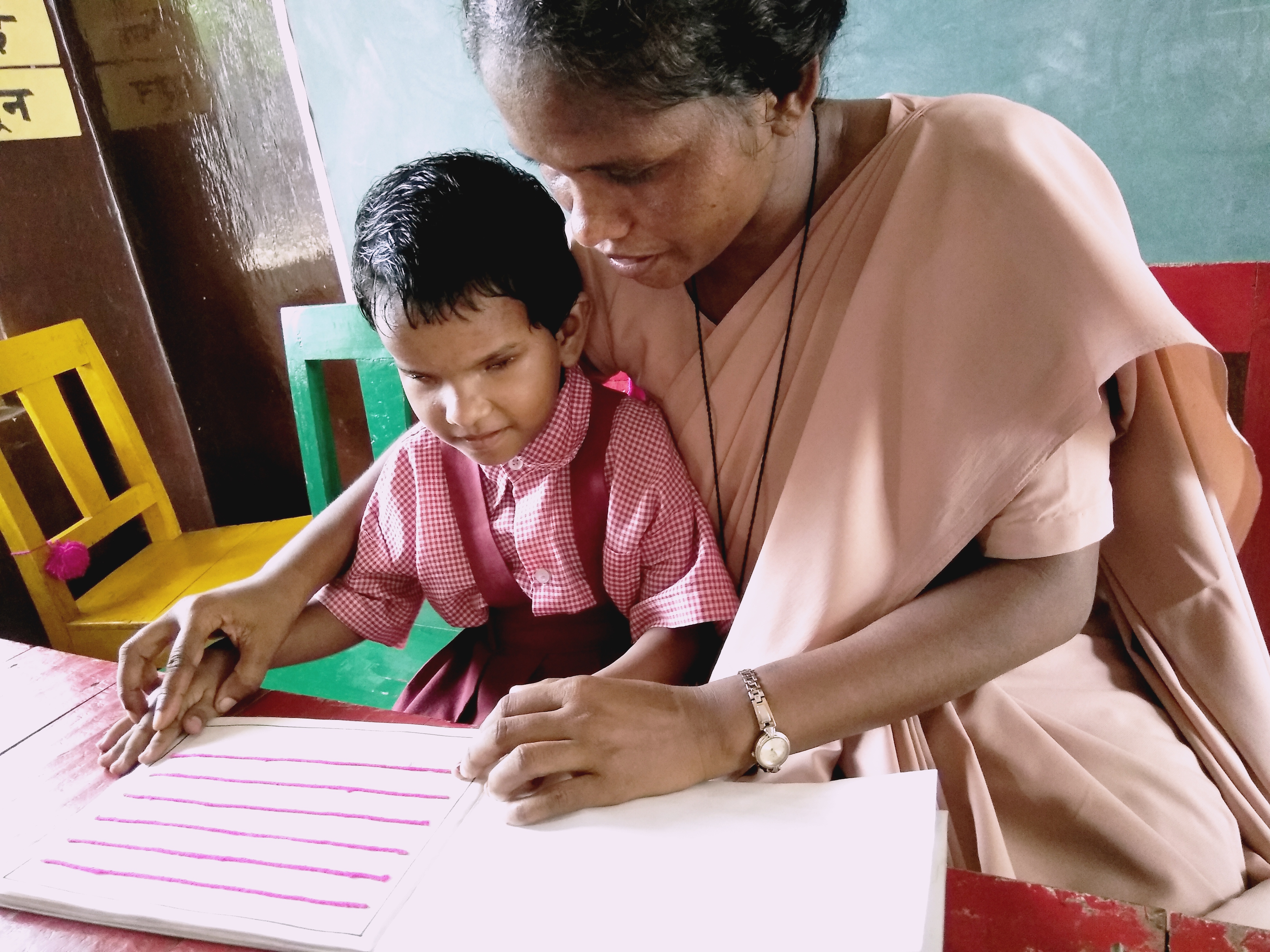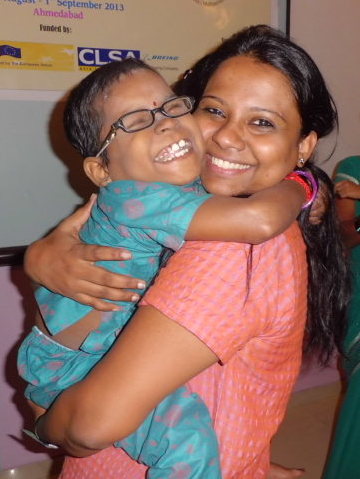Think Being Deaf-Blind Hinders Learning? Ahmedabad-NGO Will Prove You Wrong!
Sense India has even gone beyond the classroom in spreading awareness about how deaf-blind students can be helped.

Deaf-blindness is a double impairment that affects numerous people. Ahmedabad-based Sense India works for the betterment, care and education of deaf-blind children and adults in India.
Through its 59 partner NGOs across 22 states in India, the organisation works with about 77,500 deaf-blind people.
Being both deaf and blind is a multi-sensory impairment (MSI), which is a sadly unique disability that deeply affects their mobility, communication, learning and understanding of the world. Children facing cognitive, sensory, physical and psychological challenges have specific learning needs. The deaf and blind fall into this category.
Mr Akhil Paul, Director, Sense India, explains, “In any education system, a curriculum is a major tool which is centrally designed. It cannot meet the needs of a wide range of students, which would include those with dual impairment. Such curriculum, therefore, leaves little flexibility for local adaptations or for teachers to experiment and try out new approaches. The content might be distant to the reality in which the students live, and therefore it becomes inaccessible and demotivating.”
As it is, deaf-blindness is a low incident disability and instances largely go unreported.

Owing to the laudable legislative measures like the Right to Education Act and initiatives like Sarva Shiksha Abhiyan, the inclusion of deaf-blind students in mainstream schools demands that appropriate curricula and instructional strategies are developed for them. Concerns were raised by the teachers as well as parents for adaptation of content and pedagogy in general education for students who are deaf-blind since they do not gather information in what is called the traditional manner that includes seeing and listening.
The purpose of inclusive education could be served only if students with multi-sensory impairment become active participants in a classroom. And this can be achieved by developing teaching methodologies that are individualised, keeping in mind the particular learning needs of the deaf-blind as also the goals under the Individualised Education Program also called IEP that is developed for each public school child who needs special education. It is created through a team effort and reviewed periodically.
In keeping with that, Sense India organised a three-day workshop on Curriculum Adaptation for Children with Deaf-blindness/MSI under Inclusive Education. The workshop aimed to develop ways to adapt the regular curriculum for children with deaf-blindness in a regular classroom.
Sense India has also published the Handbook on Curriculum Adaptation for Inclusive Education of Students with Deaf-blindness.

The handbook aids the teachers, enabling them to adapt and modify classroom curricula according to the needs of children with dual impairment.
Says Akhil Paul, “Through this, we aim to provide quality education to such children as also enable them to participate effectively in the class.”
The adaptations are based on the NCERT text books for classes I to V on the subjects of English, Hindi, Mathematics and Environment Studies.
The adaptations have been made with the understanding that very few individuals are fully deaf-blind, as most have some vision and/or hearing that can be used for providing education. As they say, no two are alike. And that demands special care in developing educational aid.
The handbook advises tactile (touch) sign language for all deaf-blind students for effective communication.

You May Also Like: This Unique ‘Sena’ Is Letting Children Lead the Charge for Their Rights
It suggests that while the teacher is signing, the student would keep their hand over the teacher’s hand. It also advises that the teachers should sign with a pace which is comfortable for the student. If the student cannot relate to the concept through signs, it would be better to communicate by first using objects and then associate the objects with signs and Braille.
For students with low vision, the handbook recommends visual signing, with use of objects and pictures with large prints.

For effective communication, the handbook also advises a pairing of objects by using real objects, e.g. socks and shoes. Along with the signs, exposure to the names in Braille should also be given.
If the concept is that of rain or cloud, or hot or rainy day, it can be explained by enacting the poem using an umbrella with a water bottle with holes to simulate a shower. Also, a tub with paper boats can be used to explain boats or ships at sea.
Emotions like anger can be explained through the touch of a rough surface while concepts of ‘far’ and ‘near’ can be explained by asking the student to stretch his arm and place the toy on the table. Likewise ‘near’ can be explained by placing the objects where the student stands.
In Jules Verne’s Around the World in 80 Days, the story of Phileas Fogg and his travels can be told with the help of a tactile globe and a world map with markings, and string, pins and models for mountain slopes, tunnels and bridges.
The concept of ‘more or less’ could be explained by using pebbles or beads and placing them in the trays. The student would be guided to find the tray with more beads which should go with the sign of more. Likewise for ‘less’.
In environmental science, the concept of plants with a focus on roots and the food for the plants can be communicated through a multi-sensory approach. Thus, along with the nursery activities of watering, digging and sowing, the students would learn that carrots and beetroot are roots eaten as vegetables, cauliflower and broccoli are eaten as flowers while cabbage and spinach are eaten as leaves.
Sense India has even gone beyond the classroom in spreading awareness about how deaf-blind students can be helped.

Sherine Stanly, Communication Manager, Sense India, says, “Besides special educators and Sarva Shiksha Abhiyan teachers, we trained government officials, community workers, medical and paramedical professionals from the various states of India. We emphasised modes of communication, individual education plans (IEP), sex education as also teaching methodology and strategies.”
Thanks to the perseverance of Sense India, deaf-blindness has been recognised as a disability.
Rashmikant Mishra, Program Executive, Sense India, concludes, “Our concerted efforts of 20 years have borne fruits as deaf-blindness has been recognised and included in the Rights of Persons with Disabilities Act, 2016.”
Also Read: Dear States, End Your Cruel Apathy And Give The Disabled Their Legal Due!
It is the commitment of organisations like these that helps persons with disabilities and inspires others to do the same.
Log on to www.senseindia.org to know more about Sense India. You can also reach them at their Ahmedabad office or call them at +91-79-26301282.
(Edited by Shruti Singhal)
Like this story? Or have something to share? Write to us: [email protected]
Connect with us on Facebook and Twitter.
NEW: Click here to get positive news on WhatsApp!
If you found our stories insightful, informative, or even just enjoyable, we invite you to consider making a voluntary payment to support the work we do at The Better India. Your contribution helps us continue producing quality content that educates, inspires, and drives positive change.
Choose one of the payment options below for your contribution-
By paying for the stories you value, you directly contribute to sustaining our efforts focused on making a difference in the world. Together, let’s ensure that impactful stories continue to be told and shared, enriching lives and communities alike.
Thank you for your support. Here are some frequently asked questions you might find helpful to know why you are contributing?


This story made me
-
97
-
121
-
89
-
167













